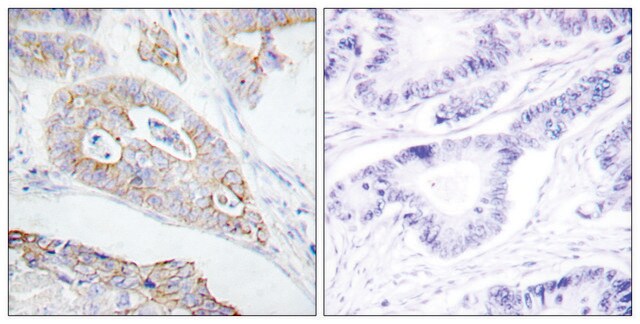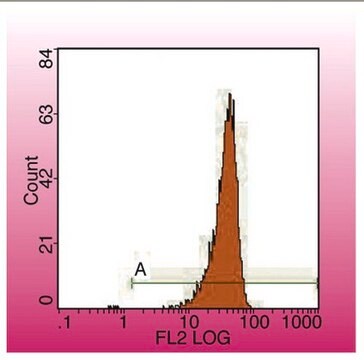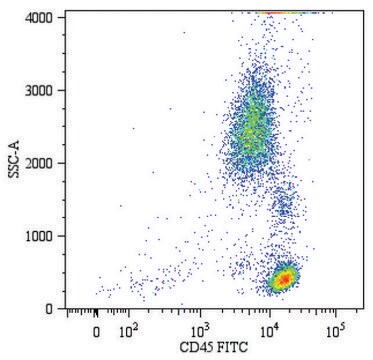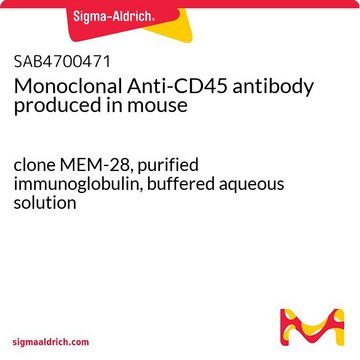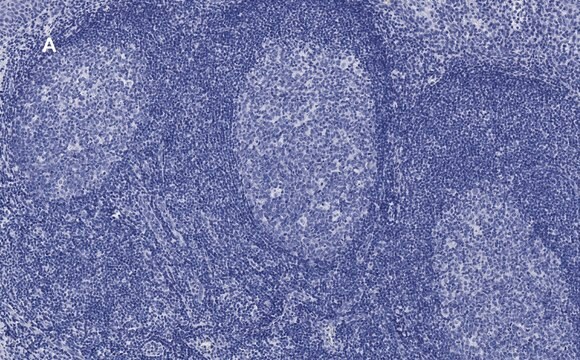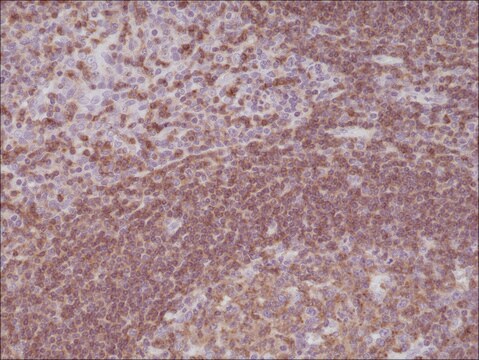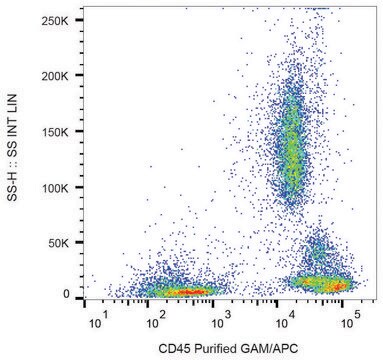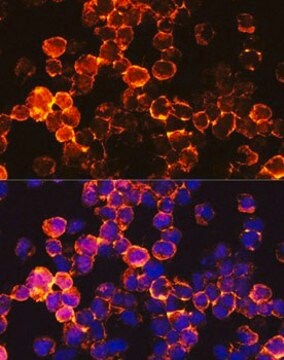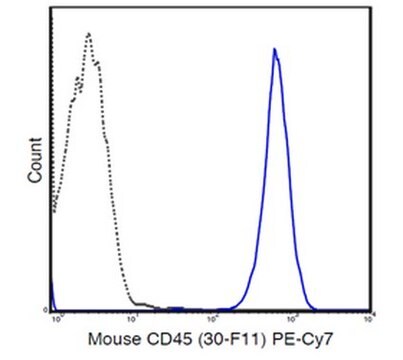05-1410-M
Anti-CD45 Antibody, clone F10-89-4
clone F10-89-4, from mouse, purified by affinity chromatography
Sinonimo/i:
CD45 antigen, Leukocyte common antigen precursor, SCID due to PTPRC deficiency, T200 glycoprotein, T200 leukocyte common antigen, Human homolog of severe combined immunodeficiency due to PTPRC deficiency, Leukocyte-common antigen, Protein tyrosine phosph
About This Item
Prodotti consigliati
Origine biologica
mouse
Livello qualitativo
Forma dell’anticorpo
affinity isolated antibody
Tipo di anticorpo
primary antibodies
Clone
F10-89-4, monoclonal
Purificato mediante
affinity chromatography
Reattività contro le specie
mouse
Reattività contro le specie (prevista in base all’omologia)
human, rat
tecniche
flow cytometry: suitable
immunofluorescence: suitable
immunohistochemistry: suitable (paraffin)
immunoprecipitation (IP): suitable
western blot: suitable
Isotipo
IgG2a
N° accesso NCBI
N° accesso UniProt
modifica post-traduzionali bersaglio
unmodified
Informazioni sul gene
human ... PTPRC(5788)
Descrizione generale
Specificità
The LCA comprises of at least 5 isoforms ranging from 180-220 kDa which are produced as a result of alternative splicing of exons A, B or C. CBL 124 recognizes epitopes common to
all of the isoforms.
Antigen distribution:
Thymocytes >95%
Granulocytes >95%
Monocytes >95%
B cells (CD20+) >95%
T cells (CD3+) >95%
NK cells (CD16+) >95%
Peripheral blood lymphocytes >95%
FUSION PARTNER: NS1 myeloma cell line
Immunogeno
Applicazioni
Immunohistochemistry (paraffin): A previous lot of this antibody was used in the discrimination between malignant cells of haematopoietic origin and other malignancies in frozen tissue sections.
Immunoprecipitation: A previous lot of this antibody was used in studies of the leucocyte common antigen complex and its identification by the Western blotting technique.
Flow Cytometry: Studies of CD45 expression and the association with T-cell receptor signaling was performed using this antibody of previous lot.
Studies of the mechanism by which CD45 regulates B cell activation through protein tyrosine phospatases.
Optimal working dilutions must be determined by the end user.
Immunohistochemistry(paraffin): Representative testing from a previous lot.
Optimal Staining of CD45 Monoclonal Antibody: Tonsil
Signaling
Immunological Signaling
Qualità
Western Blot Analysis: 1:500 dilution of this lot detected CD45 on 10 μg of Jurkat lysates
Descrizione del bersaglio
Linkage
Stato fisico
We recommend that each laboratory determine an optimum working titre for use in its particular application.
Stoccaggio e stabilità
Handling Recommendations: Upon first thaw, and prior to removing the cap, centrifuge the vial and gently mix the solution. Aliquot into microcentrifuge tubes and store at -20°C. Avoid repeated freeze/thaw cycles, which may damage IgG and affect product performance.
Risultati analitici
Jurkat cell lysate
Altre note
Esclusione di responsabilità
Non trovi il prodotto giusto?
Prova il nostro Motore di ricerca dei prodotti.
Codice della classe di stoccaggio
12 - Non Combustible Liquids
Classe di pericolosità dell'acqua (WGK)
WGK 2
Punto d’infiammabilità (°F)
Not applicable
Punto d’infiammabilità (°C)
Not applicable
Certificati d'analisi (COA)
Cerca il Certificati d'analisi (COA) digitando il numero di lotto/batch corrispondente. I numeri di lotto o di batch sono stampati sull'etichetta dei prodotti dopo la parola ‘Lotto’ o ‘Batch’.
Possiedi già questo prodotto?
I documenti relativi ai prodotti acquistati recentemente sono disponibili nell’Archivio dei documenti.
Il team dei nostri ricercatori vanta grande esperienza in tutte le aree della ricerca quali Life Science, scienza dei materiali, sintesi chimica, cromatografia, discipline analitiche, ecc..
Contatta l'Assistenza Tecnica.